It wouldn’t be incorrect to refer to customers as kings and customer service as a company’s lifeblood. A customer-centric approach is crucial, and it requires exceptional customer service and experience. As a result, customer service operations play a central role in balancing increasing revenue, reducing costs, and ensuring the best customer experience.
In this guide, I’ll discuss customer service operations and how it shapes customer experience.
Definition of customer service operations
Customer service operations is a broad term that encompasses all the activities and processes a company uses to support its customers. It includes the day-to-day activities, strategies, and processes a company undertakes to assist customers, from the initial contact through an advertisement or website visit to the final farewell.
Customer service operations involve coordinated systems, strategies, and efforts to improve customer satisfaction and loyalty. This is achieved through collaborative efforts, with everyone from customer service teams to managers contributing to offer the best customer experience.
It incorporates many roles, such as:
-
Customer support team serves as a frontline that interacts with customers and solves all types of queries.
-
Customer support operations team ensures that the customer support team works efficiently, remains more productive, and delivers top-notch support services to customers.
-
Customer service operations manager oversees and manages customer operations.
-
Customer service analysts track performance metrics, analyze customer feedback, and identify areas for improvement in the customer service experience.
Differences between customer service operations vs. other types of customer service
Before we head further into customer service operations, it’s essential to clarify whether there are differences between customer service operations and other types of customer service.
As mentioned above, customer service operations is an umbrella term that covers all the activities, processes, and strategies related to customer service. This implies that all types of customer service come within the framework of customer service operations.
All these types are integral parts of customer service operations. So, when a company works on customer service operations, it covers every aspect of customer interaction.
Types of customer service operations
Although customer service operations is a broad term, it’s divided into multiple types based on different approaches.
Onsite support
Onsite support refers to providing customer support at the customer’s location. This type of support is common for hardware-related issues, especially when the issue is not solvable remotely and requires physical assistance from customer service agents. This can involve the installation, replacement, or repair of hardware.
Examples of industries offering onsite support:
-
IT: The IT support team visits their client’s office facility to fix hardware issues, network connectivity, or other physical repairs.
-
Manufacturing: Technicians visit the factory to find faulty machinery.
-
Healthcare: Healthcare facilities send medical professionals to patients’ homes to offer bedside treatment.
Online support
Online support refers to providing a web-based app for customer support through any digital communication channel. Today, there are multiple ways to offer online support due to digital advancements.
-
Live chat: Direct assistance to customer inquiries through live chat support.
-
Email: Receive and answer customer queries through the web.
-
Social media: Interact with customers and answer their questions through different social media platforms, such as Facebook, Instagram, X, TikTok, etc.
In short, all web-based support comes under this customer support operations type. Below are a few examples of industries offering online support:
-
Banking: The banks offer their customers live chat and email-based online support.
-
Ecommerce: The ecommerce brands offer online support through live chat, email, and social media.
-
Telecommunication: Companies offer live chat and email support to tackle users’ queries.
Provide the best online support thanks to HelpDesk. ✅ Try a free 14-day trial and keep your customer satisfied! 🚀
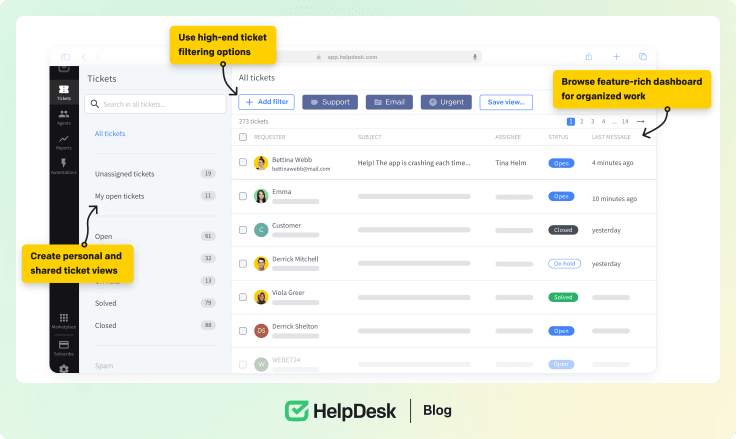
Technical support
Technical support refers to support operations for technical issues. It involves specialized support agents with the technical expertise to troubleshoot and resolve the issue. Depending on the underlying request, this customer service operations job can be performed on-site or online.
Below are a few examples of industries offering technical support:
-
Software: Software companies provide technical support to assist users in software-related issues, like installation, troubleshooting, etc.
-
Manufacturing: The manufacturing industry relies on on-site and online technical support to address hardware or software issues.
Outsourced customer support
Outsourced customer support is another type of customer service operation that refers to taking the services of a third-party company to handle customer support. This is a popular way to reduce the in-house burden of handling customer support and save costs. In addition, it helps the company keep its focus on business growth.
Below are a few examples of industries using outsourced customer support:
-
Retail: Retail companies often outsource their call centers to third-party services in countries with lower labor costs.
-
Technology: Many tech giants like Google outsource customer support to tackle the support load.
Core elements of effective customer service operations
Customer service operations should be effective in optimizing the service experience for customers and increasing loyalty. Therefore, some of the core elements of effective customer service operations are as follows:
1. Response time
Response time implies the average time customer support takes to respond to customers’ inquiries. The competitive era and changing customer demands urge companies to offer fast responses.
71% of consumers (age 16-24) believe quick responses can drastically improve their customer experience (source). According to SuperOffice, almost 46% of customers expect a response faster than 4 hours, while 12% expect a response in 15 minutes or less (source).
However, fast response time is crucial to effective customer support operations. Some of the ways to reduce response time include:
-
Use customer service software like HelpDesk that centralizes all customer queries and offers better workflow management.
-
Automate responses to common queries with chatbots.
-
Use scripts and response templates.
-
Automate the ticket system to manage and prioritize queries better.
-
Leverage self-service options, like blogs, how-to tutorials, FAQ pages, knowledge bases, case studies, etc.
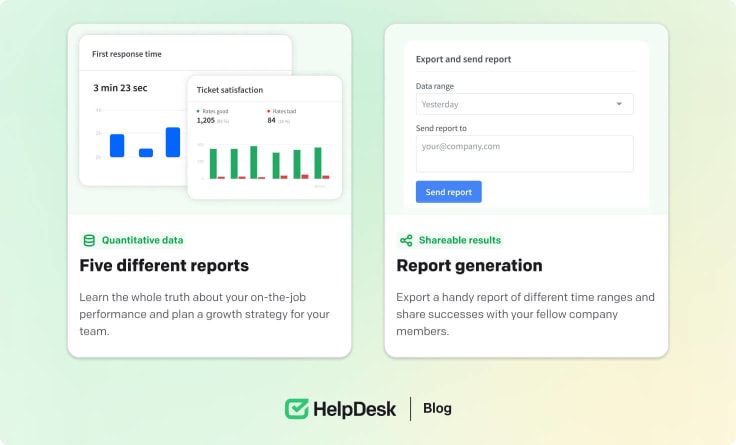
2. Accessibility
Accessibility implies how easy and accessible it is for all customers to reach the customer service team. Simply put, a company must offer various contact methods and ensure that those methods are designed to be accessible to all customers.
Some of the ways you can optimize accessibility in customer operations include:
-
Offer multi-channel support (live chat, social media, phone, and email).
-
Make your website support screen readers and adjustable font sizes.
-
Offer multilingual customer support.
-
Real-time chat translation.
-
Tools like text to speech online to enjoy natural-sounding voices and high-quality audio files.
3. Multi-channel support
Multi-channel support implies offering customer support through multiple channels. Today, customers expect to interact with the company from any digital medium, such as phone, live chat, social media, or email.
For effective customer service operations, you must offer multi-channel support. Empower customers to reach your customer service operations associate from any platform of their liking. For that, you must know the main platforms your customers prefer.
For example, if you’re an ecommerce brand, customers may like to interact with you through Instagram, Facebook, and WhatsApp. Therefore, evaluate how customers interact and then support all those channels.
You can deploy customer service software like HelpDesk, which streamlines communication between customers and support agents through different channels, such as chat, email, social media, etc.
Bring your customer support to the next level and integrate HelpDesk with LiveChat. 🤝 Take care of synchronous and asynchronous communication with your customers. 🔥
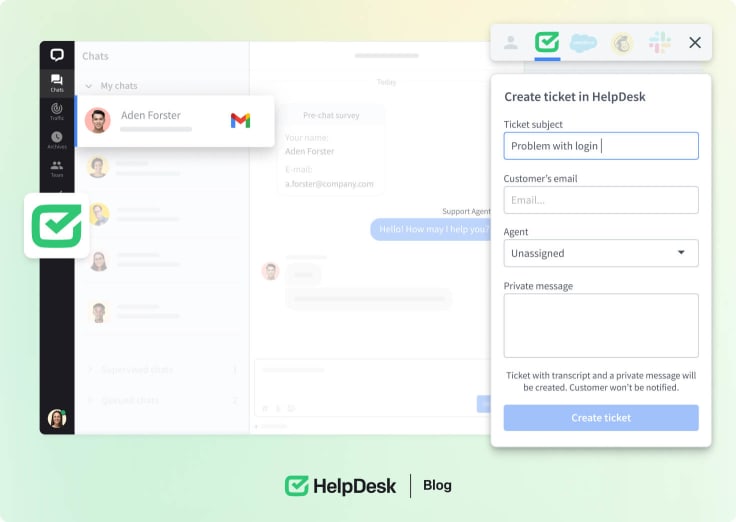
4. Customer feedback integration
Customer feedback is another core element of effective customer service operations. It’s important to collect customer feedback regularly to hear what customers say about your services. It helps identify issues and changing customer needs.
There are multiple ways to collect customer feedback, such as surveys, interviews, feedback forms, or social media channels.
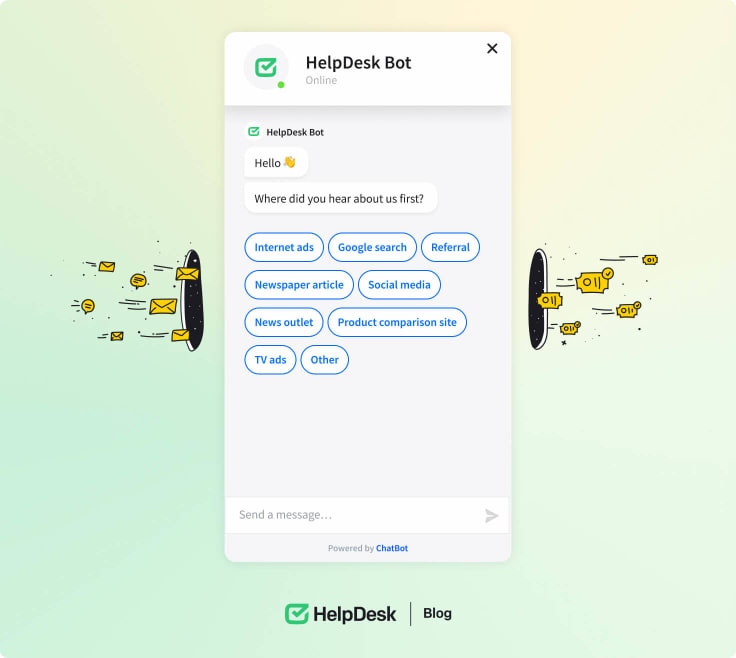
In addition to gathering customer feedback, you should also incorporate it into support operations. For instance, if the customer feedback indicates complaints about long wait times, this issue can be addressed by increasing the number of customer service operations associates, utilizing remote or in-house staff, or automating common customer inquiries with AI chatbots.
The new OpenWidget tool is an interesting option for displaying feedback on your product and enhancing customer loyalty. The Google Reviews Widget is a valuable tool for website owners who want to showcase their business’s online reputation. With a customizable widget, you can show Google Reviews on your website, giving potential customers insight into your service and product quality.
Importance of technology and software in enhancing support operations
In addition to the above four elements of effective customer service operations, emerging technologies and software solutions also play a vital role in improving support operations.
For example, a prominent technological innovation is the AI chatbot. An AI chatbot is like a virtual customer support agent that can automatically respond to common queries with its pre-trained data. This significantly lowers the number of support queries and improves employees’ performance, as they have to focus only on complex queries.
Similarly, there are now many software solutions to enhance customer support operations. To better understand, consider HelpDesk as an example.
HelpDesk is a powerful customer service software that streamlines all customer support activities. Below is a quick glimpse of the key features of HelpDesk:
-
Automate ticketing by logging, tracking, and prioritizing support tickets intelligently.
-
Managing tech cases in the IT help desk and resolving them efficiently with built-in tools for diagnostics and troubleshooting.
-
Centralize the management of all customer messages from different communication platforms.
-
Streamline repetitive tasks, route tickets, answer common queries, and more with AI-based features and automation workflows.
-
Gather and analyze customer feedback.
-
Reach out to customers to offer timely assistance.
-
Resolve your customer issue faster by streamlining communication between the customer and agent.
Explore HelpDesk. 🧑🚀 An excellent way to get customer service automation and tackle emerging customer expectations with the right set of technologies. 🚀
How to improve customer service operations
Enhancing customer service operations requires refining processes, utilizing technology, and equipping your team to deliver exceptional service. Optimized operations lead to faster, personalized service, reduced costs, and improved customer satisfaction.
Here are key strategies for enhancement:
-
Streamline processes: Review current workflows to identify bottlenecks, such as long wait times or complicated procedures. Simplifying these processes and automating routine tasks can speed up service and allow your team to focus on complex issues.
-
Invest in training: Regular training for your customer service team is crucial. It should cover product knowledge, communication, problem-solving, and empathy. Ongoing training ensures your team adapts to new technologies and evolving customer expectations.
-
Leverage technology: Implement tools like CRM systems, help desks, live chat, and AI chatbots to enhance operational efficiency. These technologies streamline communication and automate repetitive tasks, allowing your team to concentrate on more complex issues.
-
Offer multichannel support: Provide support across various channels — phone, email, chat, and social media — to meet customer expectations for a consistent experience. An integrated system helps maintain seamless service and track issues effectively.
-
Implement performance metrics: Monitor key performance indicators (KPIs) such as response times and customer satisfaction scores. Tracking these metrics can pinpoint areas for improvement and ensure your team meets expectations.
-
Listen to customer feedback: Collect and act on feedback through surveys and direct interactions. Understanding customer pain points improves operations and fosters loyalty.
-
Cultivate a customer-first culture: Ensure all departments embrace a customer-centric mindset to create a cohesive strategy prioritizing customer needs.
The easiest help desk system for a team like yours
Discover HelpDesk
Benefits of efficient customer service operations
Looking at the above basics of customer service operations, it’s evident that efficient customer operations bring many benefits.
1. Increased customer satisfaction/loyalty/retention
Excellent customer service operations undoubtedly lead to more satisfied customers and increase retention and loyalty. 73% of consumers say a good experience is vital in influencing brand loyalty (source).
When customer concerns are heard and resolved timely with the best customer experience, it gives a sense of value and appreciation that customers expect today. 86% of consumers want to purchase more for a better customer experience (source).
2. Economic benefits
93% of customers will likely repeat purchases with excellent customer service brands (source). So, you’ll have more sales with existing customers, while these customers will also market your brand further. 72% of customers will share their positive experiences with six or more people (source). This is free word-of-mouth marketing and holds the potential to bring many new customers.
Secondly, efficient customer service operations bring cost efficiency in many ways. For example, if you have deployed an AI chatbot, it will handle common queries independently. You need fewer human agents and in-house resources to handle customer support. Similarly, you can automate many other repetitive tasks and lower the operational costs.
3. Competitive advantages
Efficient customer service operations also give competitive advantages. Today’s customers prefer convenience, appreciation, and personalized experiences. If your customer operations are top-notch, all these aspects will be fulfilled effectively.
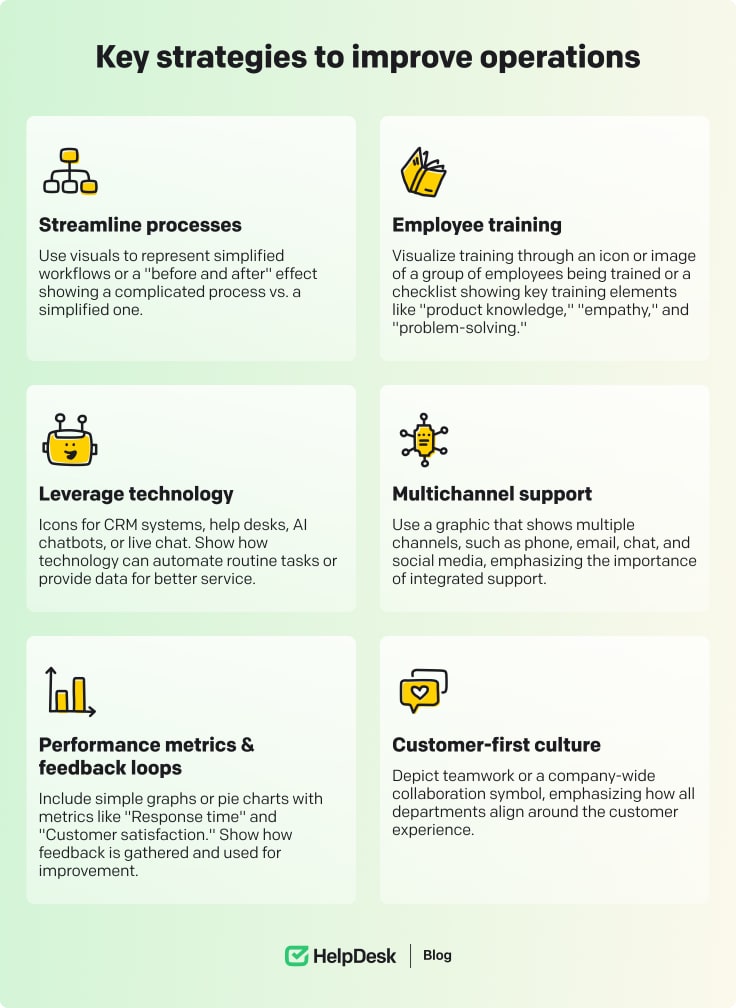
Summary
Customer service operations encompass all customer support processes, activities, and strategies to improve customer experience. Efficient service operations result in customer satisfaction, higher revenue, and a competitive advantage.
It’s time to enhance your approach by utilizing the latest technologies and software solutions, such as HelpDesk, to ensure excellent customer service operations.


